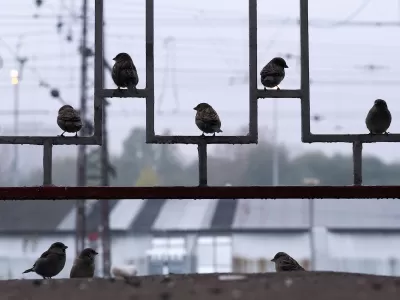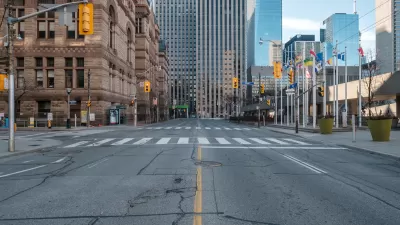Research shows higher levels of noise in formerly redlined neighborhoods, disrupting the health of both human and animal residents.

Writing in Streetsblog USA, Kea Wilson describes the results of a study of 83 U.S. cities that highlights the relationship between redlining and noise pollution.
“Today, formerly redlined areas are still predominantly Black, brown, or low-income, too, and they still experience an average maximum noise value of 89.8 decibels — a level which the Centers for Disease Control says can damage hearing after less than two hours of exposure, in addition to increasing stress, disturbing sleep, and provoking a host of other health problems.”
As environmental justice advocates know, formerly redlined neighborhoods also tend to experience higher rates of traffic violence, increased flood risk, more air pollution, and other environmental burdens.
The study expands the analysis to include urban wildlife. “Even setting the obvious threat of roadkill aside, the researchers found that noise levels commonly experienced in redlined neighborhoods can themselves wreak havoc on local animal populations, disturbing their feeding, mating, and migration behaviors and drastically decreasing their numbers over time.”
The study’s authors say cities should approach noise management through a more intersectional lens that helps policymakers understand the invisible impacts of noise and “explore a wide range of strategies, including reducing vehicle speeds, building ‘good old-fashioned physical barriers’ and sound walls around high-volume areas, and increasing border vegetation and tree lines, in addition to buzzier ‘smart’ approaches like noise-reducing asphalt.”
FULL STORY: Car Noise Pollution is Worse in Redlined Neighborhoods — And Not Just for Humans

Alabama: Trump Terminates Settlements for Black Communities Harmed By Raw Sewage
Trump deemed the landmark civil rights agreement “illegal DEI and environmental justice policy.”

Planetizen Federal Action Tracker
A weekly monitor of how Trump’s orders and actions are impacting planners and planning in America.

The 120 Year Old Tiny Home Villages That Sheltered San Francisco’s Earthquake Refugees
More than a century ago, San Francisco mobilized to house thousands of residents displaced by the 1906 earthquake. Could their strategy offer a model for the present?

Opinion: California’s SB 79 Would Improve Housing Affordability and Transit Access
A proposed bill would legalize transit-oriented development statewide.

Record Temperatures Prompt Push for Environmental Justice Bills
Nevada legislators are proposing laws that would mandate heat mitigation measures to protect residents from the impacts of extreme heat.

Downtown Pittsburgh Set to Gain 1,300 New Housing Units
Pittsburgh’s office buildings, many of which date back to the early 20th century, are prime candidates for conversion to housing.
Urban Design for Planners 1: Software Tools
This six-course series explores essential urban design concepts using open source software and equips planners with the tools they need to participate fully in the urban design process.
Planning for Universal Design
Learn the tools for implementing Universal Design in planning regulations.
Clanton & Associates, Inc.
Jessamine County Fiscal Court
Institute for Housing and Urban Development Studies (IHS)
City of Grandview
Harvard GSD Executive Education
Toledo-Lucas County Plan Commissions
Salt Lake City
NYU Wagner Graduate School of Public Service





























